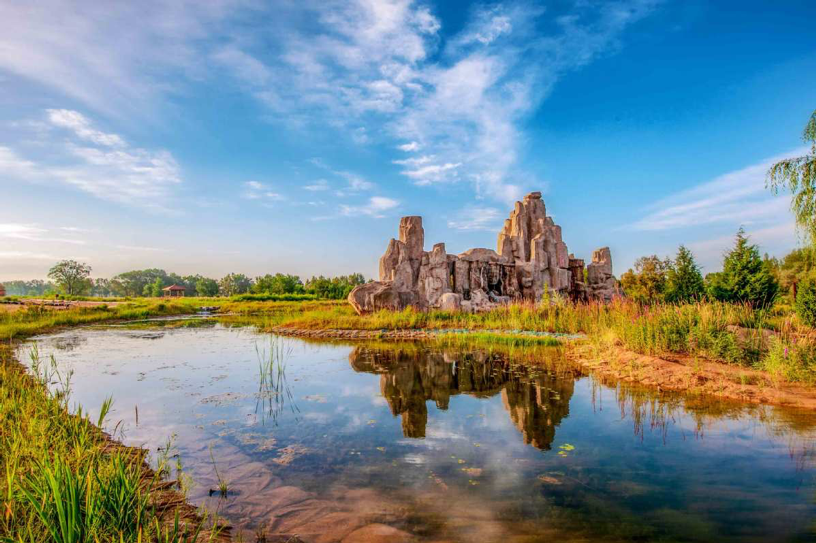Over the years, the tourism sector in China has undergone a significant transformation – keeping up with global trends in embracing sustainability and ecotourism in its development, especially as government initiatives are pushing for environmental beautification as well as conservation.
Ecotourism is a form of sustainable tourism that focuses on the natural environment, cultural heritage, and community development. It encourages travelers to gain a deeper understanding of the cultures when visiting destinations and be responsible towards nature.
The Chinese outbound eco-travel market
As Chinese tourists become more eco-conscious, both when traveling domestically and overseas, businesses have also been working diligently to improve the quality of their ecotourism offerings.
For example, Six Senses Qing Cheng Mountain resort (青城山六善酒)in Sichuan houses, an organic farm, uses only local produce, provides guests with reusable glass bottles (saving 110, 922 plastic bottles in 2021), as well as only uses Teslas for airport transportation.

Villa Finder, a rental company with thousands of private villas globally, also engages in green practices. Such as planting a tree for each booking, offsetting carbon footprint, as well as creating a dedicated collection for eco-conscious villas. Their initiatives are notably strong in Bali, with special sustainable listings like RedDoor Villa, as well as partnerships with local companies for recycling efforts.
Although Villa Finder does not currently operate in China, Khanh Tran, the Growth Manager of Villa Finder, observed that most bookings from China were for vacation villas in Bali. In fact. China was the top inbound market for Bali at 23% in 2019. On the other hand, most of the Chinese clientele of Villa Finder were from Hong Kong rather than Mainland China, with Koh Samui being the top destination for Hong Kong travelers.
Another luxury eco-resort located abroad in the Maldives, Gili Lankanfushi, also witnessed an influx of Chinese tourists in 2018. However, the Gili Lankanfushi team remarks that while all Chinese tourists are engaged with sustainability and environmental policies, Hong Kong tourists, in particular, seem to have a stronger “sustainable ethos” compared to tourists from mainland China based on their conversations.

Domestic eco-travel in China and its social implications
Sustainability being a priority for Chinese tourists is even more apparent in domestic travel, which registered a huge market of six billion domestic trips in 2019, and 2.92 trillion RMB of travel expenses in 2021. The government has continuously invested in local tourism development, having poured 155 billion USD into its tourism infrastructure in 2018, which led to an $830 billion tourism industry pre-pandemic.

In 2021, China’s Zhejiang province produced an “ecotourism map” that listed 21 ecotourism sites for domestic travel in response to the growing Chinese demand for ecotourism products. This list included sites such as wetland parks, forests, nature reserves, villages, and cultural facilities in 11 cities.
Shaanxi province also released a list of government development projects, boasting six ecotourism trails that center Northwest China’s signature red leaves, giant pandas, golden monkeys, and other natural attractions. China’s rural regions make full use of their geographical assets to attract visitors and facilitate green tourism.

However, government support for green initiatives goes beyond just being environmentally friendly. It also serves to help promote cultural preservation and economic development for struggling ethnic minorities. China’s ecotourism is an effective method for economic growth and rural poverty reduction, addressing the problem of ethnic groups that fall behind in economic development due to living in mountain-locked regions.
Cultural Consumerism in China
China is home to some of the world’s most beautiful mountains, and many of them are rich in cultural heritage. Tourists can visit China’s mountains and enjoy a scenic view while learning about its culture and history, but these mountain ranges often require cultural knowledge to appreciate or understand them fully.
For example, there are signs at the Yellow Mountain that describe a dreamy view known as the Xihai (West Sea), but there are no actual bodies of water in sight. As the West Sea refers to a myth where a hiker reached the Yellow Mountains peaks and saw a sea of clouds. While hikers can of course enjoy the Yellow Mountain view without a Chinese mythology class, knowing the cultural lore helps to create a more immersive touristic experience.

Mountain spectacles: A new not-so-natural phenomenon
One way that China has connected its cultural heritage with the ecotourism industry is through mountain performances. Instead of traditional forms of ecotourism like scenic tours, nature walks, and reserve visits; cities such as Zhangjiajie and Guilin have created outdoor theatrical shows in their mountain landscapes that showcase the local cultures.
One of the most popular mountain shows is Hunan Province’s Tianmen Fox Fairy (天门狐仙) show, with an initial production investment of one hundred million yuan. This huge production in the mountains includes a 10,000 square-meter glass steel stage, which can host 530 actors and stage crew. Some scenes of the show highlight the local Tujia minority’s traditions, like their “hanging houses.”

Another popular show called the ‘Impressions of Liu Sanjie’ (刘三姐) in Guilin reached over 300 million yuan in revenue in 2017. This mountain production enabled the local Zhuang villagers to become “farmer-performers,” working in production rather than traditional field work. These new jobs in the tourism industry allow them to earn up to 10,000 yuan annually (mostly during tourist season), which is ten times higher than their former agricultural incomes.
These new additions to China’s growing ecotourism industry show that traditional culture and heritage are important factors for development. Tourists are drawn not only to natural landscapes, but also to cultural assets.
Popular ecotourism mountain destinations in China
One famous site is the Tianmen Mountain National Park, or Tianmenshan (天门山), located in Zhangjiajie City, Hunan Province. This mountain is famous for its natural beauty and was named one of the Seven Wonders of China by the Chinese government in 2011. It was officially designated as a UNESCO World Heritage Site in 1992.

The mountain itself has three peaks: East Peak (Dongyue Feng), Central Peak (Zhongyue Feng), and West Peak (Xiyue Feng). The highest point on this mountain is at 2,160 meters above sea level.
Other tourist hotspots in China include:
- Mount Emei
- The Three Mountains of God
- The Jade Dragon Snow Mountain
Key takeaways of China’s ecotourism industry
- Many companies in the tourism industry acknowledge that Chinese tourists are becoming more eco-conscious in their traveling preferences when going abroad.
- As government policies focus more on sustainability, domestic conservation, and nature development efforts, the average Chinese consumer is also more aware and interested in being eco-conscious.
- Government investment in ecotourism is growing in order to further economic development.
- Ecotourism is important for the preservation of minority culture, and the development of mountain-locked minority communities.
- Mountain shows are a relatively new phenomenon that combines cultural assets with China’s natural landscape and has generated significant tourist revenue.
Author: Gloria Tsang





